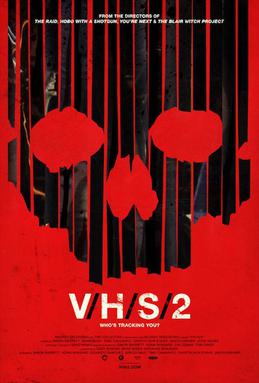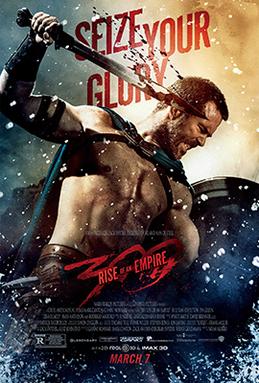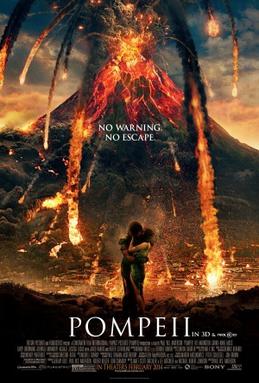The concept of V/H/S/2, and the original, sounds like it shouldn’t work intrinsically. Combine a horror anthology film (a risky bet at best) with a found footage film (a tired concept long since worn out its welcome). Together they shouldn’t work (and in the case of the original V/H/S, didn’t), but V/H/S/2 manages to pull it off, providing a horror anthology that’s a lot of fun.
You might ask why I’m doing the sequel instead of the original, and the answer is easy; I’d much rather talk about a good movie I liked than a crap one that I didn’t. The original V/H/S was garbage, with boring stories that dragged and lacked in creativity and an overreliance on the same tired, annoying clichés and techniques that have hounded ‘found footage’ since the genre’s beginnings.
Anthology films are a hard bet as they’re only as strong as the combined parts, and if even one of them is bad then the overall film suffers as a result .You can’t have one good segment and two bad ones. My problem with the original V/H/S was that the duds were real duds, the sort of boring ill-made slogs you wish were just over, and the film was made up entirely of duds.
V/H/S/2, on the other hand, mostly avoids these issues and instead uses a mix of creativity and confidence to showcase four fun segments. V/H/S/2 is a far better movie overall, where even the weaker segments are still a lot of fun. V/H/S/2 is comprised of four horror stories, each from a different director, with a fifth framing segment. The films, with the exception of the framing segment, also manage to avoid most of the pratfalls of found footage films by not having the characters lug a camera around. Instead the cameras are mostly hands-free, with the film sources being hidden cameras, helmet-mounted ones and even a bionic eye. This means the characters can actually act like people, using their hands and doing everything that it takes to survive (you never feel compelled to yell ‘drop the camera you idiot’ at the screen, which is essentially the basis for a drinking game when you watch ‘Cloverfield’).
One funny bit of nonsense; though the film is called VHS and concerns itself with VHS tapes, the sources of the ‘found footage’ would never be put on a VHS format. The GoPro camera and bionic eye are digital, while the video cameras used in the other films use much smaller tapes, which would then be converted to discs. It’s pure nostalgia why VHS tapes were the chosen media (the film was produced by a horror website, the sort that views horror in blood-covered nostalgia goggles and pine for the old video-store VHS days of horror).
Because an anthology film is only as strong as its parts, I’ll be looking at each individual segment.
~
Tape 49
The wraparound framing segment is easily the weakest part of
the movie, offering a flimsy excuse for why all these stories are being told.
Two private investigators are sent to search for a missing college student.
When they find the squalid apartment he was living in, they find a bunch of VHS
tapes. For ill-defined reasons the detectives decide to stop doing their jobs
and watch some of the tapes, thinking they’ll discover some clues to the
missing person’s whereabouts. It’s a weak wrap-around segment that suits no
purpose, ending on a really dumb note for a weak final scare. Still it does its
job of giving a breather between the different segments, and each segment is
over pretty quickly.
~
Phase 1 Clinical TrialsA man who has lost an eye agrees to a clinical trial where a bionic eye is implanted in his socket. The eye is outfitted with a camera to monitor how well it works. He goes home, happy with the implant but concerned about his life being filmed. Things get concerning when he begins to see deadly apparitions who are out to get him. He meets a woman whose bionic cochlear implant makes her hear these apparitions, which get more aggressive when they are noticed. Together the two try and cope with the changes, while the apparitions start to get more and more violent. It’s a fun concept, giving an interesting take on a ghost story, and ramps up the tension really well.
Overall it works pretty well. The bionic eye concept manages to work, with the occasional ‘blink’ adding some authenticity. It also captures the freaky magic of this sort of horror, with many scenes of some horrible spirit only barely captured as the camera turns away. There are issues, such as a sex scene added for no other reason than to add some nudity which feels out of place. Also the ghosts downright cling to tired clichés (Little girl in a blood-stained white dress? The Shining called and it wants its ghosts back). All in all it’s a decent beginning to the film, starting slowly and building up to a nice (if not sudden) crescendo. The second segment then hits the ground running pretty quickly.
~
A Ride in the Park
A cyclist with one of those Go-Pro cameras strapped to his helmet is riding through the woods and gets attacked and killed by a zombie. He quickly reanimates and goes on a killing spree in a zombified form, with more zombies joining him. So basically it’s a little bit of gory action from the zombie’s perspective. It lacks anything in terms of plot or characterisation, but it does what it does well, with some decent first-person cannibalism. For the second segment it may lack in substance, but it’ll keep you entertained with its high energy and nice gore. It also has a perfect length, clocking in at less than fifteen minutes, just enough time to get to the point without wearing out its welcome.
~
Safe Haven
And here it is, the absolute best segment in the movie. This
thing is so great it could be a standalone short, like something from that
Masters of Horror TV series. Hell, it’s so great that I’d recommend watching
V/H/S 2 just for this segment. It’s creative, it’s violent, it’s creepy, it is
downright freaky and a whole lot of fun.
A film crew enter the compound of a mysterious Indonesian
cult under the guise of interviewing its leader and founder. Secretly they’re
there to investigate claims of child abuse and brainwashing within the walls.
As the main crew interview the leader, the other film crew members, outfitted with
hidden cameras and mikes, tour the compound, finding strange things and a
general uncomfortable atmosphere. Then a bell begins to toll and all hell
breaks loose.
I don’t want to spoil anything here, but things continually
amp up, adding surprising new dimensions at every opportunity. It keeps things
exciting. Once again there is minimal characterisation given to the film crew,
with most members simply there just to be added to the body count, but it
doesn’t matter because the found footage concept works here. This becomes
genuinely exciting, a voyeuristic, high-octane haunted house ride/fight for
survival where every turn has something freaky.
The filmmakers (it was co-directed by the director of ‘The
Raid’ and the director of ‘Macabre’) understand exactly what makes this sort of
film work, keeping a breakneck pace and not being afraid to push it to the
limit.
~
Slumber Party Alien Abduction
Pretty self-explanatory. A bunch of kids and teens are
having a slumber party, getting up to all sorts of mischief. They’ve attached a
camera to the back of their dog to capture all the silliness, but things go
awry when aliens appear to kill/abduct them. And that’s about it really. It’s a
simple concept with a short build-up that gets to the point.
The aliens themselves are often pretty freaky, not because
of their design (they’re the ‘thin grey man’ variety, looking pretty cheesy
when caught in still light) but how they’re shot, almost always accompanied by
strobing lights, mist and blaring horns, giving freaky silhouettes. It’s a
mostly effective combination of filmmaking techniques that adds creepiness in
what is otherwise a straightforward horror story.
Otherwise it’s an alright, fairly weak segment that suffers from
following the high-octane freak-fest of Safe Haven. It’s also the least violent
segment in the movie, offering little in blood and gore. If anything, Alien
Abduction acts as a good cooling-off segment, having its own scares and creepy
atmosphere.
~
And there it is. I’m not fond of ‘found footage’ movies. I
often find them boring and tedious, and I hate the tropes and clichés the genre
is rife with. I even hate the techniques they tend to use and the way the
camera-based bullshit has to be shoehorned into the plot. But, despite my ire
for this type of filmmaking, I really enjoyed V/H/S/2. It was an entertaining
ride by several directors that used the ‘found footage’ concept to their
benefit, with most not letting the ‘camera’ to weigh the segments down. It’s
not a perfect movie, and some segments are weaker than others, but as a whole
it’s a good time. And anyway I’d recommend seeing it just to watch ‘Safe Haven’.





